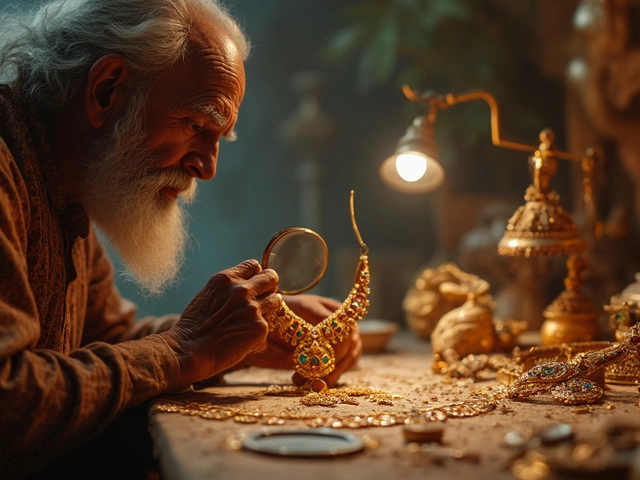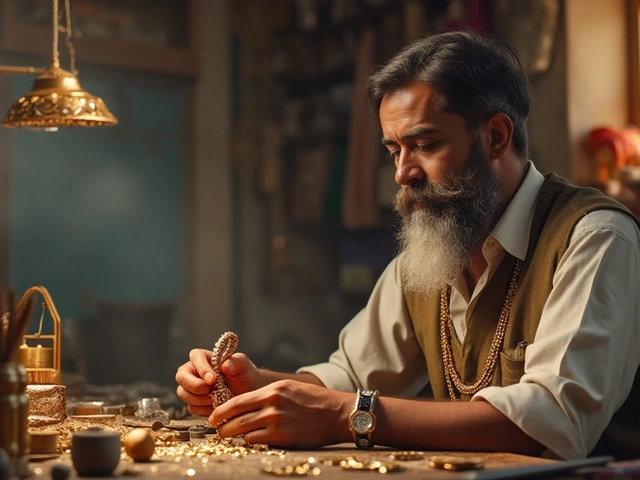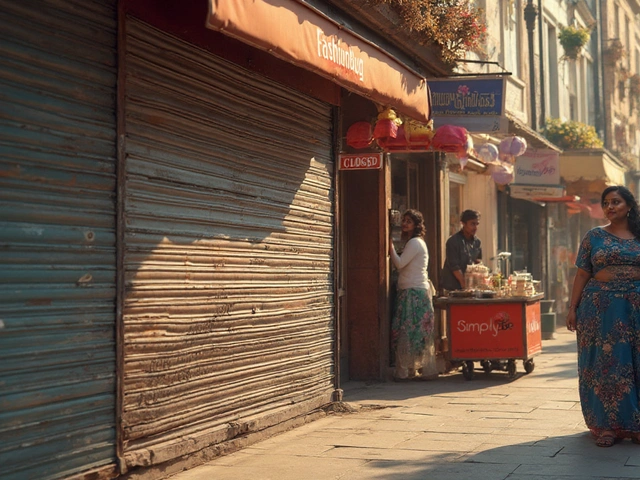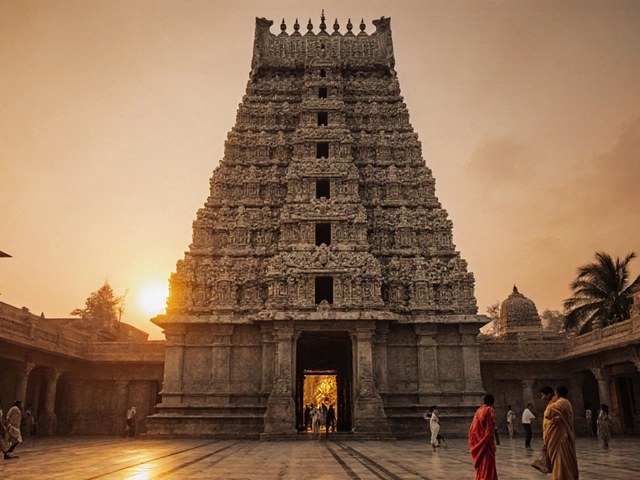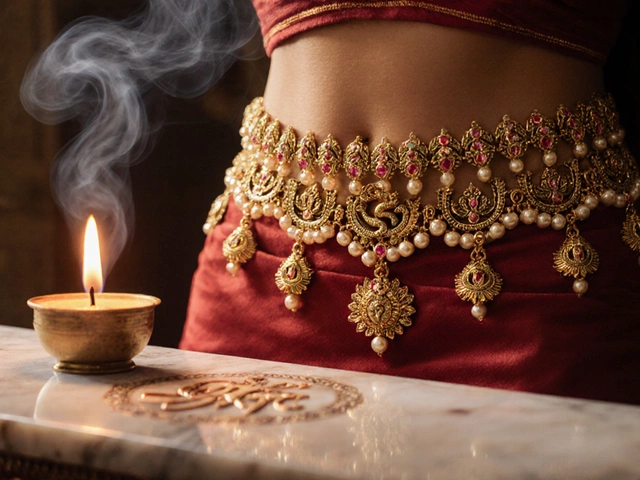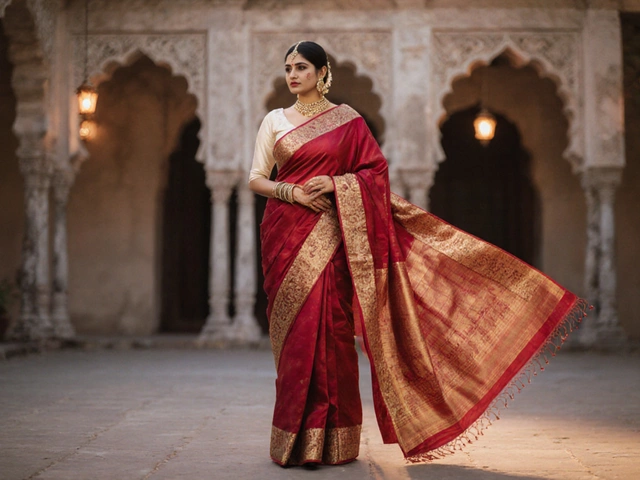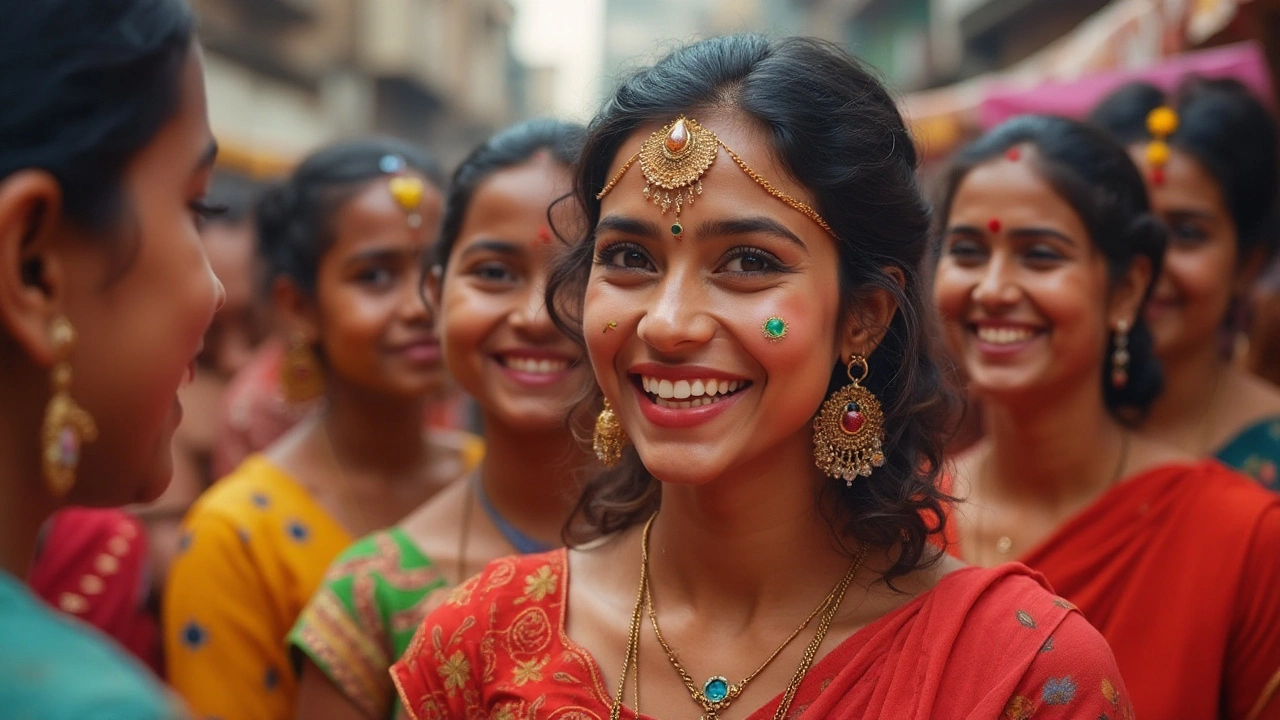
The colorful world of traditional Indian adornments offers a tapestry of fascinating cultural practices, one of which is the wearing of a bindi. While commonly associated with matrimony in the eyes of many, the reality is far more nuanced. The tradition of wearing a bindi, rich with symbolism and history, extends its embrace to women across varying ages and marital statuses.
For centuries, the bindi has served not just as a decorative accessory but as a marker of one's cultural identity and spiritual connection. Today, as societal norms evolve, many young women—married and unmarried—celebrate their heritage by donning this beautiful forehead mark. Whether it’s for style, spirituality, or a nod to tradition, the practice remains an integral and cherished part of Indian culture. Join us as we delve into the cultural tapestry of the bindi and uncover how it resonates within the lives of unmarried women today.
- Unpacking the Traditional Significance of the Bindi
- The Historical Context of Bindis in India
- Cultural Interpretations and Modern Perspectives
- Bindis and Their Connection to Indian Spirituality
- Practical Tips for Choosing and Wearing a Bindi
- Bindis Across Different Indian Cultures and Regions
Unpacking the Traditional Significance of the Bindi
The bindi has long captured the fascination of many, standing out as a quintessential feature in the cultural attire of Indian women. Traditionally, this small yet potent dot adorned on the forehead emerges from a rich history dating back thousands of years. The term itself is derived from the Sanskrit word 'bindu,' which means point or drop, and it symbolizes the mystical third eye, the chakra that resides between the eyebrows representing wisdom and concentration.
Its position is not arbitrary; in Hindu tradition, the middle of the forehead is believed to be the seat of latent wisdom. The bindi acts as a protective mark, warding off negative energy and inviting divine vision. Such is its significance that it became an integral part of the Solah Shringar, the sixteen traditional adornments practiced by women as a symbol of marital status. However, its roots are not solely tied to marriage. This mark of spiritual, cultural, and social observance transcends marital status. Even in ancient texts and sculptures, goddesses and unmarried women are depicted adorned with bindis, emphasizing its broader cultural footprint.
A fascinating facet of the bindi is its interplay with social identity and stratification. Through different eras, it has symbolized various aspects of Indian life, from caste and religious beliefs to individual and collective identity. In modern times, this traditional accessory has evolved from its sacred connotations to become a fashion statement, embraced by women across the globe. Hollywood celebrities and global influencers have often showcased the bindi, albeit detached from its deep-seated tradition, sparking both admiration and debate in equal measure.
The colors and styles of a bindi can represent different beliefs and emotional states. Red, for example, is traditionally worn by married women as it signifies love and prosperity, while black might be worn to protect against the evil eye. In contemporary times, bindis come in varied colors and shapes, from crystal adornments to intricate designs, each adding to the aesthetic appeal while maintaining its symbolic core.
"The bindi is not just an embellishment; it is a reflection of our roots and respect for spiritual traditions," notes Dr. Anika Sharma, a cultural anthropologist specializing in South Asian traditions. Her perspective echoes the enduring respect and reverence for this tiny mark that holds profound significance.
Delving deeper, one can observe that the practice spans beyond Hinduism, marking its presence in Jain and Buddhist cultures as well. In some regions, children too are adorned with a simplistic version of the bindi, known as the 'Tilak', right after birth to signify their introduction into the family and community while offering protection. This universality of practice highlights how the bindi transcends individual identity, tying into the collective cultural consciousness of India.
Today's generation increasingly sees the bindi as a bridge between the past and present—a symbol of individual expression with a nod to shared heritage. As younger women embrace the practice, they contribute to the narrative that the bindi, irrespective of marital status, is a right of heritage and a reflection of pride in one's unique identity. The transformation of the bindi from a predominantly religious signifier to a cultural icon perfectly encapsulates the dynamic interplay of tradition and modernity.
The Historical Context of Bindis in India
The bindi has an ancient heritage that stretches back thousands of years, where its origins are deeply rooted in the sacred traditions and spiritual practices of India. Historically, the term 'bindi' comes from the Sanskrit word 'bindu,' which means 'dot' or 'point' and symbolizes the mystical third eye believed to activate inner wisdom. Though its exact inception is hard to pinpoint, archaeological findings and ancient texts such as the Vedas suggest that decorated foreheads have been part of Indian culture for over 5,000 years, depicting its seamless blend into the fabric of Indian identity. The adornment was initially worn by both men and women, signifying not only marital status but also their devotion and piety, highlighting its role as a spiritual symbol before evolving into a regal fashion statement.
Throughout history, the design and meaning of the bindi have diversified, adapting to the changes in societal norms and the cultural environment. In ancient times, various religious scripts mentioned its power to focus cosmic energy in the Ajna chakra, a crucial energy point in the body. Over time, as Indian society shifted from Vedic traditions to more structured religious systems, the bindi evolved into a marker of social and marital status, predominantly worn by married women as a symbol of their commitment and auspiciousness. This transition is markedly evident in the way various dynasties and religious sects have embraced and interpreted the bindi in their unique vernacular, often linking it to their own spiritual narratives.
As India moved through the epochs of Mauryan, Gupta, Mughal, and British rule, the design, application, and meaning of the bindi continued to evolve, yet its core symbolic significance persisted. During the Mughal era, the use of bindis saw a transformation in terms of artistry, with embellishments like gemstones making their way into elite segments of society. Meanwhile, the 19th and 20th centuries painted a picture of traditional resistance as the bindi was seen as an emblem of cultural pride against colonial influences.
According to Romita Roy, an established cultural historian, “The bindi transcends ornamentation; it is a testimony to the resilience of indigenous identity amidst historical tides.”
Interestingly, in contemporary India, despite its traditional roots, the bindi has made a compelling comeback as a versatile accessory embraced by youth, both unmarried girls and men. It is now seen in diverse avatar modes, from minimalist modern dots to intricate designs boding multiple colors and even motifs. It's considered a fashion statement on international runways, challenging the stereotypical assumptions about this age-old practice. While the essence of the bindi still reverberates with its ancient echo, its adaptability keeps it in a constant state of cultural rebirth, ensuring its continued relevance in both Indian society and beyond.
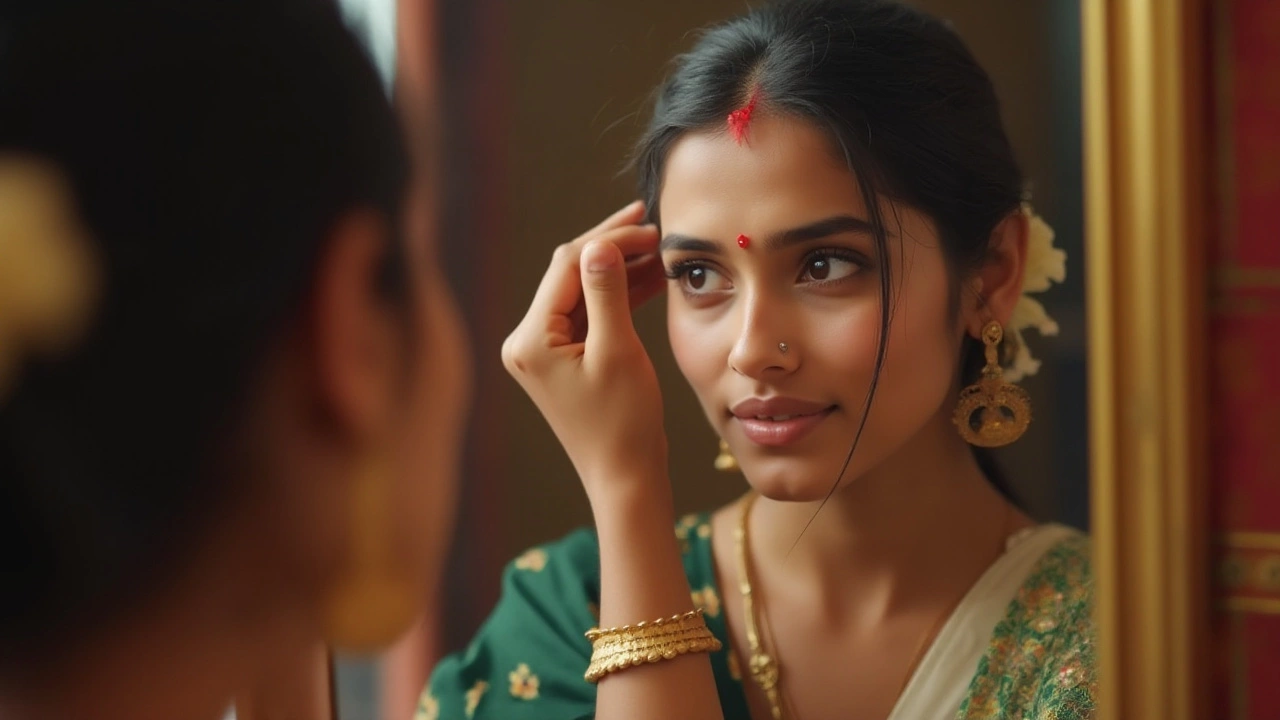
Cultural Interpretations and Modern Perspectives
Throughout history, the bindi has been a symbol of both spiritual and social significance in India. Originally, it served as a representation of the 'third eye,' a gateway to enlightenment and inner wisdom. Hindu religious practices often link the bindi to spiritual Chakras, particularly the Ajna—a center of intuition and clarity. Over the centuries, it has been deeply woven into the social fabric, more specifically, a mark of marital status for women. Yet, as societal dynamics evolve, the cultural meaning and interpretations of the bindi have expanded spectacularly.
In recent decades, a wave of modernism has swept across India, presenting a more inclusive approach towards traditional customs. Younger generations are reshaping narratives, making the bindi a universal symbol of feminine expression rather than a marital indicator. It is not uncommon to see unmarried girls proudly wearing these vibrant dots. With globalization influencing fashion, the bindi has gained acceptance even beyond Indian borders, seen adorning the foreheads of international celebrities and fashion enthusiasts. This shift showcases how traditional elements can transcend geographical and cultural barriers, evolving into eclectic urban fashion statements.
"The traditions we inherit are like guiding stars, and their journey across the sky is shaped by each generation's imaginations and dreams," suggests renowned Indian sociologist Dr. Anita Desai.
Interestingly, a staggering number of young Indian women—up to 70% according to a 2022 survey by the Indian Cultural Society—consider the bindi an essential part of their identity, irrespective of marital status. This survey highlights not only a renewed sense of pride in Indian heritage but also how cultural symbols can be embraced differently depending on personal beliefs and contemporary trends. Bindis today are available in myriad designs, from simple red dots to elaborately bejeweled pieces, reflecting personal tastes and fashion sensibilities.
Fashion and Self-expression
Amid this cultural redefinition, the bindi has found its place as a versatile fashion element that mirrors one's personality and style. Designers and artists have begun experimenting with bindi designs, drawing inspiration from both traditional motifs and contemporary aesthetics. These evolving designs empower unmarried girls to redefine what it means to wear a bindi, shifting focus from traditional constraints to personal expression. Fashion magazines frequently highlight innovative ways to incorporate bindis into Western and fusion outfits, showcasing its adaptability.
The fashion scene today recognizes the bindi as a powerful accessory that adds a touch of glamor and cultural richness to any ensemble. This acceptance and celebration of the bindi in modern fashion demonstrates its fluidity, as it gracefully marries the past with the present. It speaks volumes about how cultural traditions can be repurposed and celebrated in new and exciting ways, creating a tapestry of modern identities intertwined with ancient roots. Thus, the bindi remains a vibrant symbol, continuously evolving while still honoring its time-honored heritage.
Bindis and Their Connection to Indian Spirituality
The humble bindi is not just a decorative element; it holds deep spiritual significance in the vast tapestry of Indian culture. In Hinduism, it is commonly believed that the area between the eyebrows, where the bindi is placed, is the sixth chakra, referred to as the 'ajna' or 'brow chakra'. This chakra symbolizes wisdom and concentration, often associated with the third eye, a mystical inner eye that offers insight beyond ordinary sight. The act of wearing a bindi at this specific spot is intended to retain energy and strengthen one's concentration, serving as a meditative focal point during contemplation or prayer.
The significance of the bindi transcends its visual appeal, embedding itself deeply in the spiritual practices of millions. Many yogis and spiritual seekers draw attention to the bindi's role in calming the mind and promoting clarity of thought. The practice is not restricted by marital status, accentuating a universal aspect of spirituality accessible to all, whether married or unmarried. This spiritual connection elevates the bindi from a mere tradition to an active part of daily life for many who seek balance and peace in their inner world. Additionally, the color red, often used for bindis, symbolizes strength and love in Indian society, imbuing the wearer with a sense of self-assurance and auspiciousness.
For those who view the bindi through a spiritual lens, it becomes a part of a holistic lifestyle, echoing practices that nurture both the soul and the body. The integration of the bindi into meditation and spiritual rituals highlights its role as a tool for grounding the mind and emphasizing spiritual progress. This viewpoint finds expression in various historical texts and religious scriptures that underscore the importance of focusing on the inner self. As spirituality continues to influence modern life, the bindi remains a constant, serving as a bridge between ancient wisdom and contemporary practice, offering solace and guidance to those who seek it.
"The bindi, as an emblem of spirituality, acts as a visible reminder of the profound journey towards inner harmony," states Dr. Rohit Prasad, a leading cultural historian.
The convergence of spirituality and personal identity finds a vivid expression in the choice and style of bindis, reflecting the wearer's personality and spiritual aspirations. Whether simple or ornate, each bindi can be an expression of the wearer's spiritual beliefs and commitments. This profound connection reshapes the perspective of the bindi from merely a decorative mark to a spiritual emblem revered and cherished throughout generations.
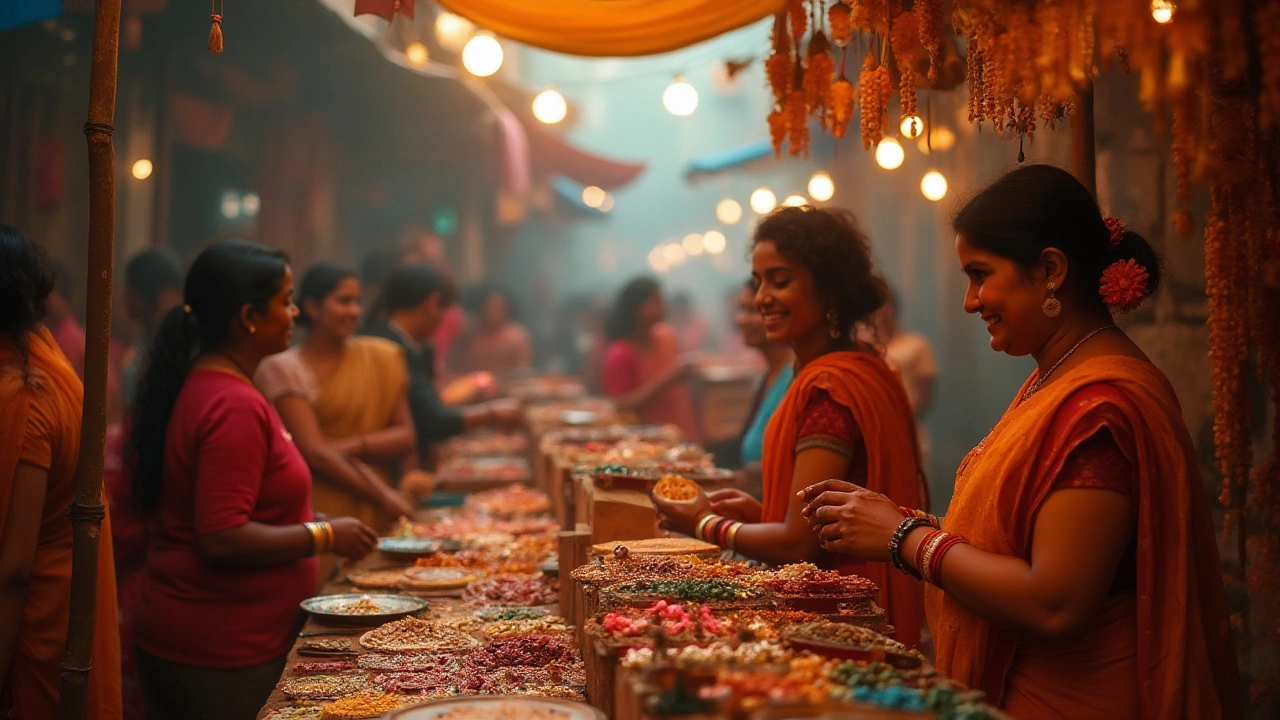
Practical Tips for Choosing and Wearing a Bindi
The bindi, though small in size, is a crucial element for anyone looking to tap into the cultural significance of Indian attire. If you're new to this or seeking a fresh perspective on how to integrate it into your style, here are some thoughtful tips. The first step in choosing a bindi is to consider the occasion. Bindis come in a wide array of colors and designs, so it’s important to pick one that complements your attire and the significance of the event. For day-to-day wear, simple and understated designs can add just the right hint of cultural charm without appearing too extravagant. On the other hand, festivals or weddings call for glittery, more elaborate designs that capture the festive spirit. Do not underestimate the role of your facial structure when selecting a bindi, as this can significantly influence the type and size of the bindi that will suit you best.
The next aspect to consider is the color of the bindi. While the classic red bindi remains a popular choice due to its traditional roots, modern interpretations allow for a full spectrum of colors. It's fascinating to note that the color of the bindi can be thematic or selected to match an outfit's undertone, creating a cohesive look. If your outfit is vibrantly colored with intricate patterns, opting for a contrasting bindi color can help it stand out. Conversely, if your attire is largely monochromatic or simply designed, a bold or intricately designed bindi could provide an elegant focal point.
"The bindi not only reflects the wearer's aesthetics but also serves as an expression of personal and cultural identity," notes cultural historian Dr. Nalini Patel.
An often overlooked factor in bindi selection is skin type and the adhesive properties required. Traditional bindis made from powder often require a paste to stay affixed, which might not work well in humid or active conditions. For everyday occasions, self-adhesive bindis made from fabric or soft plastic offer convenience and durability, effortlessly adhering without extra preparation. Now, let's discuss choosing the size. Large, ornate bindis often steal the spotlight in traditional outfits combined with elaborate jewelry, yet subtle designs can be perfect for settings needing a touch of elegance. Smaller simple bindis are ideal for work or casual settings, providing a nod to cultural heritage without overpowering your ensemble.
Your personal style plays a critical role when choosing a bindi. While tradition holds immense value, modern fashion lets you experiment, combining traditional elements with contemporary twists. This versatility could range from geometric shapes to imitation gemstones, offering a look that feels unique to the individual. Mixing designs, like the incorporation of artificial gems or rhinestones, can add dimension to your appearance, offering a modernized take on this age-old tradition. Be sure to store bindis in a cool, dry place, ideally in small packets or boxes, to maintain their adhesiveness and prevent them from losing color or shape over time. Lastly, integrating the bindi into your daily wear or fashion lineup is about confidence. Wearing a bindi should be a celebration of heritage, identity, and beauty, so wear it with pride, knowing that tradition evolves and finds different ways of expression.
Bindis Across Different Indian Cultures and Regions
The bindi, versatile in its appearance and application, reflects the incredible diversity found within India’s cultural tapestry. Across the numerous states and ethnic communities of India, this simple yet profound forehead mark shifts in meaning, style, and significance. This makes it a true embodiment of the country’s rich tradition and the unique expression of each community’s identity. In North India, for instance, the traditional red bindi is often seen as a symbol of marriage. Yet, unmarried girls wear bindis too, especially during festivals or celebrations, not necessarily indicating marital status but as a nod to their heritage and roots.
Moving along to the eastern regions, the use of bindis among Bengali women showcases different styles influenced by both traditional beliefs and contemporary fashion. Historically, the vermilion bindi here denotes the power and strength of a married woman. Still, many young Bengali girls today sport bindis that range in color and design, viewed more as a cultural accessory than a matrimonial insignia. Similarly, the eastern state of Odisha celebrates the beautification ritual of a young girl wearing a bindi, adorned with diverse patterns during special ceremonies and dance performances.
In Southern India, the bindi often goes by the name 'pottu' and sees a variety of intricate designs with vivid colors. The region is known for its elaborate temple celebrations where both married and unmarried women, deeply connected with spiritual devotion, wear bindis as part of religious practice. In addition, the bindi in Tamil Nadu represents the chakra point, leading to a spiritual awakening for practitioners of traditional yoga. It's not only about aesthetics here but about embracing an elevated form of existence and consciousness.
"The bindi is an art form itself. It transforms across cultures in beautiful, distinct ways, reminding us of the simple elegance that carries deep spiritual resonance," says Anjula Gupta, a respected historian of Indian folklife.
Across Western India, in states like Gujarat and Maharashtra, the bindi enjoys vibrancy during festivals like Navratri, paired with traditional attire like lehengas and saris. This celebration presents an opportunity for young girls to wear creatively designed bindis that complement their festive ensembles. The practice is a joyful expression rather than a societal expectation, allowing for exploration of the bindi's aesthetic appeal rather than its social implications.
The significance attached to each bindi and how it's worn varies widely, reflecting the distinctive ethos of each cultural group. Some choose ornate, gem-studded versions for occasions, while others stick to minimalistic designs for everyday wear. Each variation tells a story, holding cultural anecdotes and family traditions passed down generations. The bindi experience in India transcends a singular cultural narrative, embracing a tapestry of stories as diverse as the country itself. This variation not only celebrates uniqueness but also binds together women across different communities, creating a shared sense of belonging and unity.

